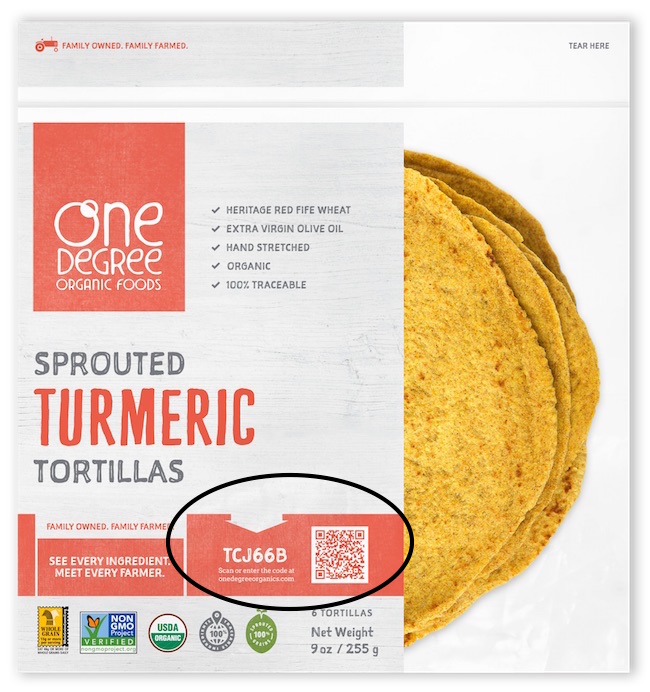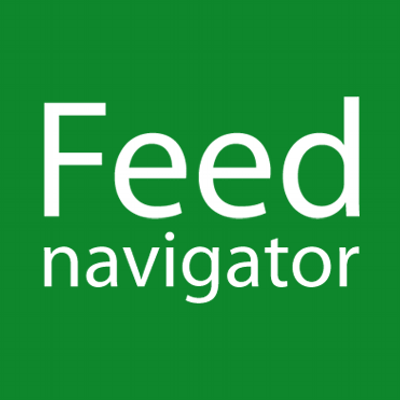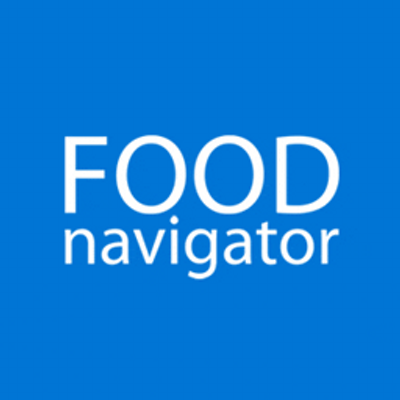
A Discussion About Organic Food Packaging with Becky Nelson
One of the most important aspects of building an organic food brand is developing effective packaging.
What the box, bottle, bowl, bag, wrapper or pouch looks like and feels like plays a critical role in building brand loyalty, and organic companies should never underestimate just how attached consumers become to a brand’s packaging.
Wanting to get some expert insight on this subject, I spoke with Becky Nelson, partner at Bex Brands, one of the industry’s leading packaging and design firms. Its current roster list includes Suja, Foodstirs, Once Upon a Farm, Temple Turmeric, Big Tree Farms, Back to the Roots, Bonafide Provisions and Chameleon Cold-Brew, among many others.
What is the key to good packaging?
Good packaging is a combination of copy and visuals coming together to not only state the brand and product, but perhaps equally as important, the packaging needs to articulate the personality of the brand and what the brand stands for.
The communication on the packaging must be clear and not overwhelming. Furthermore, it must have the correct communication hierarchy (placing communication elements in a clear rank of importance). Therefore, the words or art concepts should be presented in a way that consumers can easily understand which flavors or ingredients are in the product.
Lastly, consumers want to feel good about the organic product that they are purchasing. Effective packaging confirms that the values of both the brand and the customer are aligned. This could be represented by logos such as Demeter, 1% to the Planet, Fair for Life or Certified Humane.
What are the mistakes brands make when it comes to packaging?
Many companies don’t know who they are and come out with packaging similar to competitive brands they admire. You can easily spot brands that are faking it.
Also, when companies are so close to the packaging, it can be hard for them to be objective, and they fail to make it visually appealing. Or, the packaging structure component — the bottle or the wrapper — might not be the right one.
Some brands try to say way too much on the label and don’t prioritize communication. As a result, the messaging is overwhelming and very unclear.
Functionally and aesthetically, executing good packaging is a complex process. It’s not hard to fall short in one of these areas.
What are a few packaging trends?
Transparency is a huge one these days. More and more, consumers want to know where their food comes from, and that means providing information about specific ingredients or farmers.

One Degree Organics does an excellent job of this. Not only does the company have video profiles of their farmers on its website, but One Degree Organics utilizes QR codes on the packaging to give this information as well.

Another trend that is becoming prominent is adding areas of discovery.
This means including some type of physical attribute to the packaging or some message that positively impacts the consumer. These smaller details are not only subtle and increasingly important, but it helps to create conversation online — on Instagram, for example — where consumers are excited to share the product with their friends or followers.
At the bottom of the KeVita bottles is the little heart.

Honest Tea has its message underneath its cap.

And Suja has an endearing and memorable slogan “We Made This Juice Sunny in San Diego” in very small font at the top of its bottles.

These messages or attributes really help to maximize the brand experience and create a loyal following. They also tend to be details that are not seen right away.
Given that there is a culinary trend to use more exotic foods, a third packaging trend is to use more exotic and adventurous artwork — in tone of voice, photography and typography.
One brand doing this well is Tribali Foods.

What are a few examples of packaging that really work? What is one that falls short?
I love New Barn’s almondmilk! The company’s approach is very simple while appealing to the mouth, eyes and touch.

When you pick up the almondmilk, the New Barn bottle and wrap, with its slight bit of texture with the wood grain, seem perfect. The text matches the simplicity of the packaging, which conveys “We are just almond milk. That’s it.”
The packaging is modern and really intelligent. Yet, it still retains that touch of nostalgia without being your parents’ dairy milk, adorned with the cows and blue sky images.
Good Culture does a fantastic job as well with its organic cottage cheese, and its name is brilliant. The packaging speaks to what the product is — good and natural ingredients which taste great.

It has excellent communication hierarchy and not overly crazy fruits, with no spilling or splashing. The layout is balanced and elegant, and the 17 grams of protein is prominent but not overly so. The fonts and color blocking really work.
Interestingly, however, Good Culture’s packaging for its non-organic line is not nearly as impressive.
While I understand that this product is for the mass consumer and the company had to differentiate between the organic line and the non-organic line, it didn’t need to be dumbed down this much. The font is elementary, and the image of the cottage cheese is not appealing at all. Just because it is for the mass doesn’t mean that it shouldn’t be sophisticated.

What would you say about fonts?
As iconic graphic designer David Carson says, “Don’t mistake legibility for communication.”
So many clients are fearful of script fonts due to decreased legibility, but script fonts can add visual texture to a design and can communicate elegance or spontaneity. However, you may not want to use a script font to say the most important thing on the packaging.
With fonts, it’s critical to consider your communication hierarchy. Some packaging utilizes just one font but most times, packaging has different fonts. Multiple fonts can be a great way to delineate hierarchy, so a consumer is led through the communications with ease.
******
Having analyzed the industry for many years now, I have come to appreciate just how much packaging and design matters. While there is no question that the product has to taste good and be healthy, the importance of packaging — and all of its fine details and nuances — can never be underestimated.
The details, however tiny they may be, play a significant role in driving brand loyalty.
 |
Have a great day! 
Max Goldberg, Founder |
Quick Hits
* Hollywood actress and Once Upon a Farm Co-Founder Jennifer Garner will be the keynote speaker at The Organic Center’s annual gala at Natural Products Expo West 2018.
* Action Item: Tell Congress to support the Homegrown Organic Act of 2017, which would provide funding and technical assistance to farmers seeking to make the transition to organic.
* The organic industry’s leading baking company, Foodstirs, has just launched its first-ever branding campaign called #MoreFlourToYa
* Meanwhile, Annie’s launched its own new digital marketing campaign called ‘Your House. Your Snacks.’
* Plenty of news with the NFL and organic this past week.
* The San Francisco 49ers have taken a stake in The Organic Coup, the country’s first certified organic fast-food chain.
* And on the East Coast, Miami Dolphins owner and real estate magnate Stephen Ross has invested more than $25 million into &pizza, a pizza chain which uses organic dough.
* I am writing to you from the National Organic Standards Board Meeting in Jacksonville, Florida.
* Later today, it is expected that the NOSB will vote on hydroponics in organic, and in next week’s letter, I will have a full recap of the outcome and of the entire meeting.
* For coverage of the meeting, be sure to follow me on Instagram Stories (@livingmaxwell).
Weekly News Summaries

Baby Food Brands are Dangerously Contaminated, Including Organic Ones
By Ashley May
In a study released by The Clean Label Project, it was found that baby foods, including organic brands such as Plum Organics and Sprout, had dangerously high levels of arsenic, lead, cadmium and acrylamide.

We Could See New Store Formats with Whole Foods
By Alison Griswold
On Amazon's 3rd quarter conference call, CFO Brian Olsavsky said that the company will probably develop new store formats.

Proposal to Curb Fraudulent Organic Imports May Be Insufficient
By Aerin Einstein-Curtis
Proposed instructions on how to crack down on fraudulent organic grains from abroad may not be not strong enough to protect the integrity of organic.

Recap of the Organic Produce Presentation at the PMA Fresh Summit
By Tim Linden
Matt Seeley, CEO of the Organic Produce Network, talked about market dynamics, opportunities and challenges in the organic produce sector.

To Improve its Selection, Amazon Lowers Fees for Grocery Items
By Jason Del Rey
In an attempt to grow its number of lower-priced grocery items, Amazon has cut its seller fees from 15% to 8%.

Study: Pesticides Linked to Reduced Fertility in Women
By Jacqueline Howard
In a study published in the journal JAMA Internal Medicine, women who consumed more fruits and vegetables, which contained high amounts of pesticide residue, were associated with a lower chance of pregnancy and a higher risk of pregnancy loss.

GMO Industry Employs New Propaganda Tactics for CRISPR
Seeking to learn from its mistakes with GMOs, seed companies are looking to build trust with consumers for foods edited with CRISPR technology.

REBBL is Helping to Establish the Super-Herb Adaptogen Category
By Elaine Watson
On track towards a $20 million run-rate, the uber-successful REBBL wants to redefine the meaning of a functional beverage.

CircleUp Will Invest $125M Using Artificial Intelligence
By Lora Kolodny
CircleUp Growth Partners is a new $125m fund that will make CPG investments using a machine-learning tool called Helio.

Foodworks is the WeWork for Food and Drink Companies
By Emily Laurence
With facilities in New York City, Newark, Providence and Portland, Foodworks is providing a co-working space for food and beverage entrepreneurs.

Planet Organic is Exploring a Sale
By Ashley Armstrong
The UK's dominant organic supermarket chain has retained an investment bank and is putting itself up for sale.
The material in this newsletter is copyrighted and may be reprinted by permission only. All requests must be in writing. Please use our contact form to request republication rights.
Newsletter Archive
Quick Hits
* Hollywood actress and Once Upon a Farm Co-Founder Jennifer Garner will be the keynote speaker at The Organic Center’s annual gala at Natural Products Expo West 2018.
* Action Item: Tell Congress to support the Homegrown Organic Act of 2017, which would provide funding and technical assistance to farmers seeking to make the transition to organic.
* The organic industry’s leading baking company, Foodstirs, has just launched its first-ever branding campaign called #MoreFlourToYa
* Meanwhile, Annie’s launched its own new digital marketing campaign called ‘Your House. Your Snacks.’
* Plenty of news with the NFL and organic this past week.
* The San Francisco 49ers have taken a stake in The Organic Coup, the country’s first certified organic fast-food chain.
* And on the East Coast, Miami Dolphins owner and real estate magnate Stephen Ross has invested more than $25 million into &pizza, a pizza chain which uses organic dough.
* I am writing to you from the National Organic Standards Board Meeting in Jacksonville, Florida.
* Later today, it is expected that the NOSB will vote on hydroponics in organic, and in next week’s letter, I will have a full recap of the outcome and of the entire meeting.
* For coverage of the meeting, be sure to follow me on Instagram Stories (@livingmaxwell).
